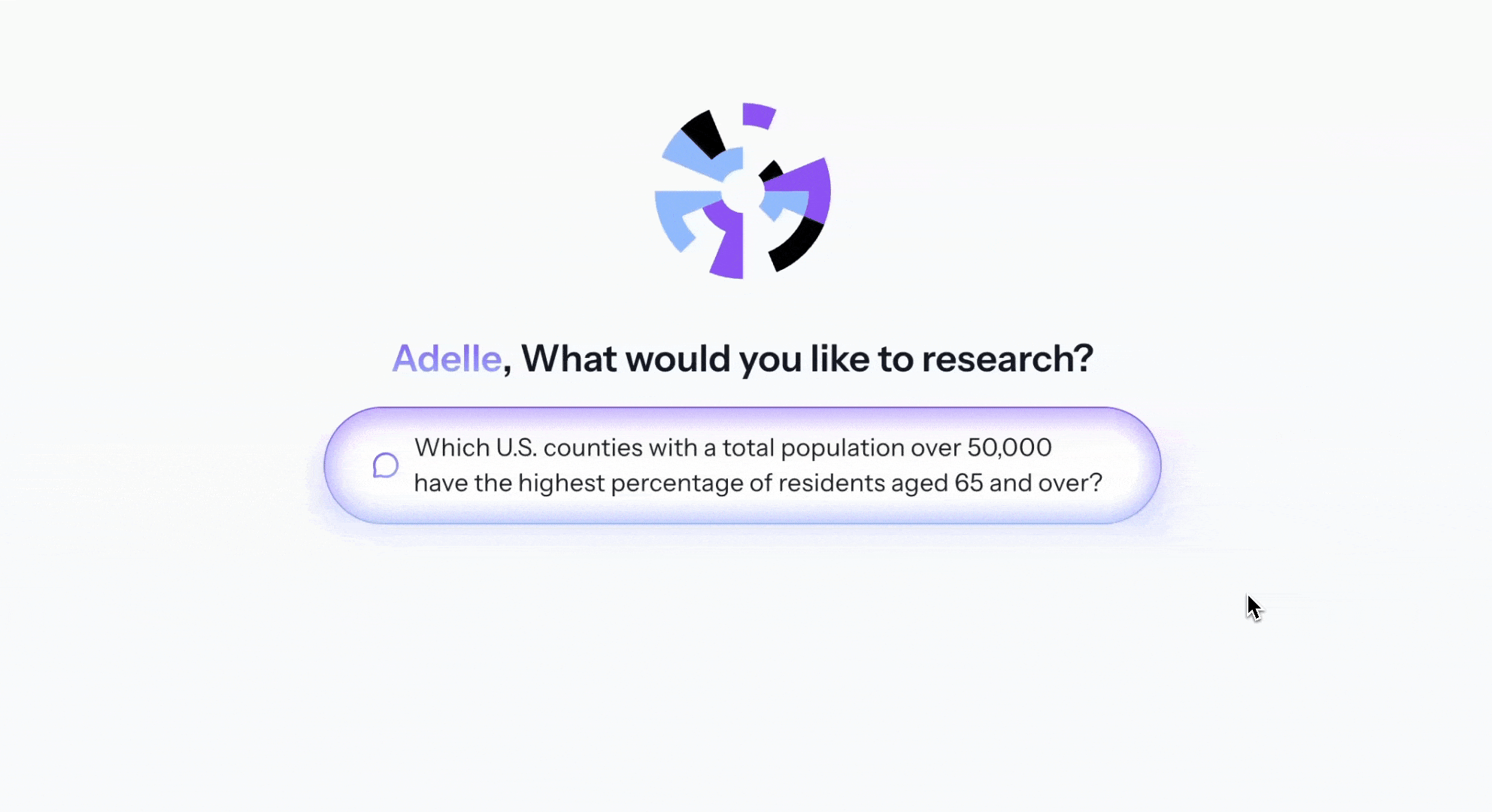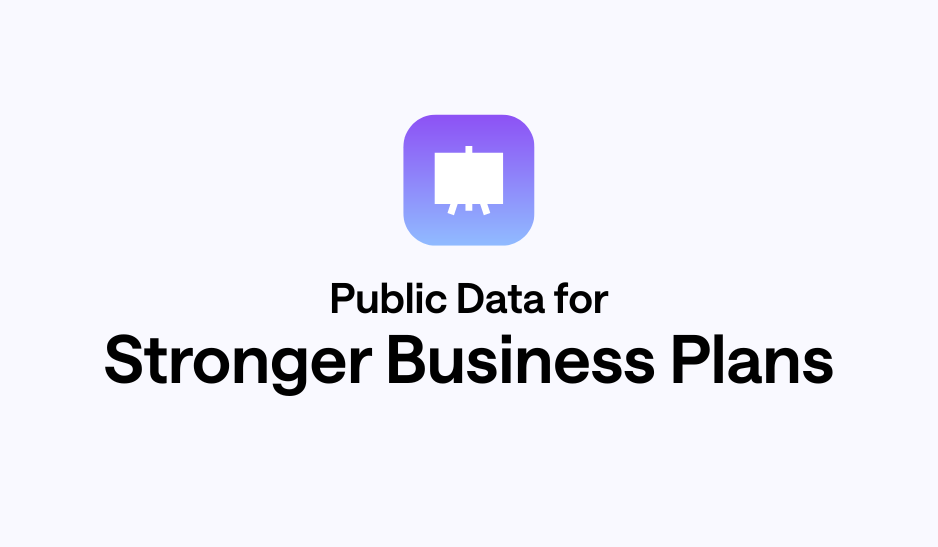Build Your Data Strategy Framework in 4 Steps
Most corporate data strategies are comprehensive, meticulously crafted documents. They are also often ineffective, relegated to a shared drive where they are rarely consulted for actual business decisions. The fundamental flaw in these strategies is that they prioritize the collection of data over the answering of critical business questions. The result is a costly initiative that fails to produce a clear return on investment.
This guide presents a different approach: a practical, actionable data strategy framework. The objective is not to gather more data, but to get specific answers that inform your next move. A successful framework is a living tool that connects directly to business goals, enabling anyone on your team—not just data analysts—to validate assumptions and identify opportunities. According to a report by MIT Technology Review Insights, while 94% of business leaders see data as key to decision-making, only 38% believe their organization excels at using it to create value. This framework is designed to close that gap by starting with business objectives, not with data.
Before You Build: What Questions Should Your Data Strategy Answer?
An effective data strategy framework begins with clear, specific business questions. Generic goals like "improve marketing performance" are too broad to be useful. Instead, formulate precise questions that demand a concrete, data-supported answer. This discipline ensures that your data analysis efforts are directly tied to a potential business action.
Consider these examples of specific questions a business leader might ask, all answerable with public data:
-
Market Expansion: "What are the top three U.S. counties with a high concentration of households earning over $150,000 annually and significant population growth over the last five years?"
-
Product Validation: "In which counties in the Pacific Northwest is there a high concentration of residents aged 25-44 with graduate degrees and a median household income over $100,000?"
-
Go-to-Market Strategy: "Which U.S. counties have the highest concentration of their workforce employed in the 'Professional, Scientific, and Technical Services' industry?"
-
Talent Acquisition: "Which U.S. counties have a high number of residents with a graduate degree in a science or engineering field, combined with a median gross rent below $1,500 per month?"
These questions are specific, measurable, and directly linked to a strategic decision.

A 4-Step Template for Your Actionable Data Strategy Framework
This template provides a structured process for building your data strategy. Each step builds on the last, guiding you from a high-level objective to a specific, data-informed action.
Step 1: Define and Prioritize Your Business Objectives
First, list your top 3-5 business objectives for the upcoming quarter or year. These objectives must be specific and measurable. For each one, formulate the core question you need to answer using available demographic or economic data.
-
Example Objective: Increase market share for our B2B software in the healthcare sector.
-
Core Question: "Which U.S. counties with a total population over 50,000 have the highest percentage of residents aged 65 and over?"

Step 2: Identify the Data You Need (and Where to Find It)
Next, map the questions from Step 1 to the specific data points required to answer them. This data will likely be a mix of internal information (e.g., from your CRM) and external public data from sources like the ACS.
Acquiring external data is often the most challenging part of this process. The conventional method involves:
-
The Hard Way: Manually searching government portals like the U.S. Census Bureau for relevant datasets. This work is time-consuming and requires specialized knowledge to navigate. Once found, these datasets must be downloaded, cleaned, and combined—a technical process that can take a data analyst weeks to complete. These delays can render the insights obsolete by the time they are delivered.
Step 3: Create a Decision-Action Map
This map is the core of your data strategy framework. It translates your questions and data into concrete business actions with measurable outcomes. Create a simple table with the following columns for each of your core questions.
| Business Question | Data Required | Potential Decision/Action | Success Indicator |
| Example: "Where should we focus our marketing spend for a new home services company?" | Demographic data (age, population density), median household income, number of households with 2+ vehicles, and mean travel time to work. | Allocate 70% of the regional marketing budget to the top 3 identified counties. | Generate a 15% increase in qualified leads from target counties within 6 months. |
Step 4: Execute Analysis and Visualize Findings
With your map defined, the final step is to perform the analysis. This involves processing the data identified in Step 2 to answer the question from Step 1, which then informs the action in Step 3. Traditionally, this requires proficiency in tools such as SQL or Python to query databases and create visualizations, including charts and maps.
Skip the Manual Work: Build Your Framework Faster with Cambium AI
The framework above provides the structure, but its execution can be slow and resource-intensive, particularly at Steps 2 and 4. Cambium AI is designed to accelerate this process, allowing you to move directly from question to answer without technical barriers.
Instantly Answer Your Core Business Questions
Cambium AI’s natural language interface allows you to ask the exact business questions you defined in Step 1 of your framework. Instead of tasking a data team and waiting weeks, a business leader can type a query and receive an answer immediately.
For instance, a user can ask, "Show me U.S. counties where more than 40% of the population aged 25 and over has a bachelor's degree or higher, and the median gross rent is under $1,200." Cambium AI returns an interactive map in seconds. This directly replaces the manual research, data cleaning, and analysis process.

Access Reliable Public Data Without the Hassle
Cambium AI addresses the primary pain point of Step 2: sourcing and preparing external data. The platform is pre-loaded with clean, reliable public datasets from the Census and ACS. This eliminates the need for your team to find, clean, and integrate data themselves. It empowers non-technical professionals—marketers, strategists, and founders—to conduct their own sophisticated market analysis without needing a data science background.
Validate Your Assumptions and Strengthen Your Arguments
With Cambium AI, you can rapidly test the hypotheses in your Decision-Action Map. Generate charts, maps, and tables to support your strategic recommendations with credible evidence.
For example, a founder seeking investment can use Cambium AI to produce a map showing the total addressable market based on demographic and economic data from the ACS. This visual evidence can be added directly to a pitch deck, replacing simple assumptions with a data-backed argument.
Who Should Use This Data Strategy Framework Approach?
This modern, question-driven approach is suited for professionals who need to make strategic decisions quickly and with high confidence using public data.
-
Entrepreneurs and Founders: You need to validate market assumptions rapidly to build a business case for investors. You operate with limited time and budget for a dedicated data team.
-
Business Growth and Marketing Leaders: You are responsible for identifying new markets and audience segments, but are constrained by the slow pace of traditional market research.
-
Non-Technical Strategists and Researchers: Your expertise is in strategy and analysis, not coding. You need to access and analyze public data to inform policy, expansion, or investment decisions without technical roadblocks.
Ready to Build a Data Strategy That Drives Action?
An effective data strategy framework is not defined by complex technology or massive datasets. It is defined by its ability to provide fast, reliable answers to your most important business questions. The 4-step template in this article gives you the structure to ask the right questions, and a tool like Cambium AI provides the engine to answer them. This approach transforms data from a costly, slow-moving asset into an on-demand resource for strategic decision-making.
Stop guessing and start knowing. See how you can answer your biggest business questions in minutes. Start here.

.png)
.png)